Shepherdpics posted about their photographer of the month and posted a link to Patrick Smith Photography, which I spent some time going through, and must say it's fantastic work. Patrick's methods page is of particular note, as he has lots of examples of what makes and doesn't make a fantastic landscape image.
Monday, March 31, 2008
The Joys of Old Lenses
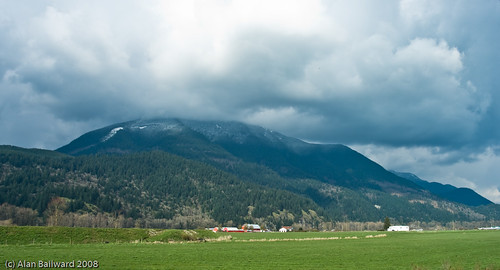
With the K20D not only can I use any of these lenses still, and they are now all magically image stabilized! Of course, the benefits of in-body stabilization vs. lens only stabilization is a discussion that can go on for hours, mostly it seems that those with it in their chosen brand say it's great, those without it rail against it and talk about the benefits of lens-only.
I will continue to ignore all this of course, and shoot as much as I can with the benefits of image stabilization on random 20+ year old lenses :)
Posted by Alan Bailward at 12:29 PM 0 comments
Saturday, March 29, 2008
Squamish Chief Teaser
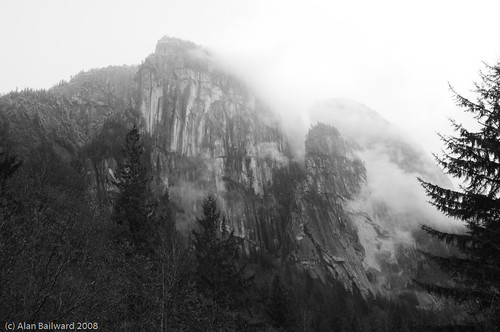
I have to say that the K20D is a monster in the file size department! Some of the panoramas I'm stitching together are 400mb .psd files! I've had to reduce some as Lightroom will only accept 10,000 x 10,000 as the maximum size for importing as well. It's glorious to know that I could zoom to 1:1 and see amazing detail in the rocks and trees.
Anyway, I hope to finish off some more processing tomorrow and shall post more then.
Posted by Alan Bailward at 11:32 PM 0 comments
Labels: Black and White, Lightroom, Squamish
Thursday, March 27, 2008
A Mix of Assorted Links
 Just a few quick links that have fallen on my lap in the last while that I figured I'd share.
Just a few quick links that have fallen on my lap in the last while that I figured I'd share.
- The blog that inspired this one, the K10D blog got a DA40mm, which is the lens that I've been looking hard at and will probably be my next purchase. Good look at both bokeh and ISO 1600 performance with that lens.
- Kelby Training released a getting started tutorial for Photoshop Express (in public beta apparently). Via Photoshop Insider.
- Here's another training video, this time on Studio Lighting. Total of 8 parts.
- If studio lighting is a bit daunting, Strobist has the excellent Lighting 101 series.
Monday, March 24, 2008
Photography Podcasts To Watch
To get better at photography I've found that listening to those around me, and surrounding myself with people who know more than me, and one of the resources I've found for this is podcasts.
On the top of the list, mostly due to it's more "conversational" feel, and the fact that I'm familiar with some of the hosts from other Podcasts on the TWiT network, is This Week In Photography. I was fairly impressed with the guys on this podcast as they have a varied background, and are covering all angles, with audio and video podcasts, forums on Flickr, photo contests, and so on. I also like that the "main" podcast is audio only, so it's easier to listen to while driving, walking, etc.
And before you ask, no, this isn't due to their call for help in getting the word out (I'm in Canada and not eligible for any of their prizes or promotions) :)
Lightroom Killer Tips is another good one, focused (obviously) on Lightroom and varies from both advanced and novice usage.
The Beautiful Landscape podcast. This is the newest one I've subscribed to, and have only seen one episode so far (a photo review). I quite enjoyed the review of an image that was done, and was fairly impressed as to the detail that was gone into. If you want to understand more what goes into making a good image (and they also have tech information as well) this is one to check out.
Do you have any favorites that you'd like to add?
Posted by Alan Bailward at 9:38 PM 0 comments
Understanding Exposure As A Water Faucet
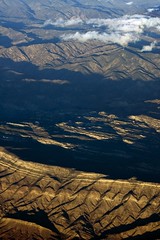 One of the best explanations of exposure I heard (or perhaps read) was to think of it like letting water through a faucet into the sink. If light is represented by water coming out of a faucet, then a properly exposed image would have a definitive (for the purposes of this write-up anyway) amount of water that is needed. An over-exposed image would have too much water, an under-exposed image would have too little.
One of the best explanations of exposure I heard (or perhaps read) was to think of it like letting water through a faucet into the sink. If light is represented by water coming out of a faucet, then a properly exposed image would have a definitive (for the purposes of this write-up anyway) amount of water that is needed. An over-exposed image would have too much water, an under-exposed image would have too little.
Now to get that needed amount of water, there are two factors in effect in your water faucet. The first is the length of time you let the water run for (shutter speed), the second is how much water you let through, ie: the size of the pipe (aperture).
So it doesn't matter how you manipulate these two factors, as long as the correct amount of water ends up in the sink when you're done. So a properly exposed image can be made by opening up the faucet really wide and letting a quick burst of water through, or opening up the faucet just a tiny bit, and letting it run a long time. Either way you get the same amount of water in the sink, and your image is properly exposed.
The beauty is, for the most part, your camera will calculate the amount of water itself and you can use either the "Tv" or "Av" (sometimes called just "A" and "T") to control the shutter speed (time the water runs) or aperture (amount of water let through) respectively.
Now there are a few obvious things I'm completely ignoring here. The first is ISO, or the sensitivity of your film. For the purposes of this beginner info though, we're going to assume that the camera is dealing with the ISO, and that while you can set this, this is something that the camera factors in when you ask it to calculate what the proper exposure is. I'm also assuming that the camera is calculating the exposure correctly. As you'll begin to realize as you learn more, your camera does make mistakes, and often. They are getting better every year, but there are lots of scenes that will completely confuse modern sensors. Strong backlighting, snow, white on a black background or black on a white background will more often than not confuse your camera and produce images that are grey and muddy, too dark, or too bright.
So hopefully the simple idea of a faucet and a predetermined amount of water that needs to end up in the sink will help to understand exposure.
Posted by Alan Bailward at 9:15 PM 2 comments
Sunday, March 23, 2008
Black and White in Minnekhada Regional Park

This was taken today in Minnekhada Regional Park where my wife and I went for a walk after a (very) late breakfast out in PoCo with some friends of ours. The original shot out of the camera (below) I wasn't at all impressed with. The colors were off, the sky was blown out and it looked almost under-exposed. My K20D seems to be doing a bit of underexposing lately, I'm not sure if it's me or the camera yet though.

Posted by Alan Bailward at 12:00 AM 0 comments
Thursday, March 20, 2008
Pentax Lens Roadmap Updated
Pentax has updated their lens roadmap. Future lenses look pretty exciting. The abbreviated version is:
- 17-70/F4 SDM
- 55-300/F4-5.8
- 60-250/F4 SDM
In the prime category:
- 15mm Limited
- 30mm SDM
- 55/F1.4 SDM
- 300/F4 SDM
I'd love to buy/play with some of the pancake or limited lenses, to see just what the difference in quality is! Also having a fast and high quality prime of "portrait" length would be cool to have for when I become "noted fashion photographer Alan" :)
Posted by Alan Bailward at 2:51 PM 0 comments
Wednesday, March 19, 2008
K20D Review in Wired
Found somewhere on the net, Wired has a review of the K20D in their list of Prosumer DSLR cameras. I like that they note that us Pentaxians (is it ok to call oneself that, or do you have to be "recognized" by Pentax in some way first?) are the unloved stepchild in a Canon/Nikon world, and they noted some goods and bads that I hadn't seen before. I've never had complaints about the noisy shutter or AF, while the shutter sound is different from the *ist-D, I never thought of it as loud. It's also interesting that the things that made their "wired" list were items that I hadn't seen bubble to the top of the list before (though they certainly aren't ignored). From the article:
Often overshadowed by the bigger, more boisterous brands, the Pentax K20D distinguishes itself as "the little camera that could" with the leanest form factor, an easily adopted user interface, internal dust removal and image stabilization, bomber construction and weather sealing, the highest resolution (14.6-megapixels) in the group and the lowest price point.For other reviews and to see what folks are saying, hit the Pentax SLR DPReview forum where folks are generally well behaved and often post links to other reviews.
Posted by Alan Bailward at 12:33 PM 0 comments
Monday, March 17, 2008
Inspiring Video - Celebrate What's Right with the World
Found a very cool video posted in one of the DPReview forums called Celebrate What's Right With The World. This is a 22 minute video from Dewitt Jones (of National Geographic) on how to get perhaps a new perspective on creating photographs. A bit cheesy and "Self-Improvement Seminar"-ish yes, still worth a look I think.
Posted by Alan Bailward at 6:57 PM 0 comments
Sunday, March 16, 2008
Nature Photos From Hayward Lake
Last weekend I had a nice bit of a photowalk around Hayward Lake, out in the boonies between Maple Ridge and Mission. Below are a few of the shots that I got on that day.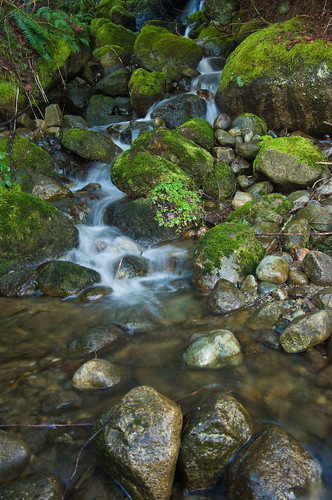 This shot is of a small waterfall (read: drainage creek) along the road to get to the parking lot. This combined two of the features in the K20D that are new to me coming from the *ist-D. The first is Live-View, which let me hold the camera down at my feet, right next to the water and still see the composition.
This shot is of a small waterfall (read: drainage creek) along the road to get to the parking lot. This combined two of the features in the K20D that are new to me coming from the *ist-D. The first is Live-View, which let me hold the camera down at my feet, right next to the water and still see the composition.
My biggest complaint with Live-View is that I am using it and the "optical" preview, which is the standard lens stop-down as you're looking through the viewfinder to determine depth of field, and there's no way to switch between the two! To change from one to the other you have to go into the menu, select custom functions, page down five pages, and change "preview mode". Ugh.
The second nice thing about the above shot is it's handheld at 3/10 of a second. A very slow speed, lets all give a "w00t!" for in body stabilization! Heck, for any stabilization for all you Nikon and Canon shooters out there :) This is taken off the bridge separating Hayward and Stave lakes. Not much to say, boosted the contrast a bit in lightroom, and did a bit of highlight recovery to bring back some detail in the clouds.
This is taken off the bridge separating Hayward and Stave lakes. Not much to say, boosted the contrast a bit in lightroom, and did a bit of highlight recovery to bring back some detail in the clouds.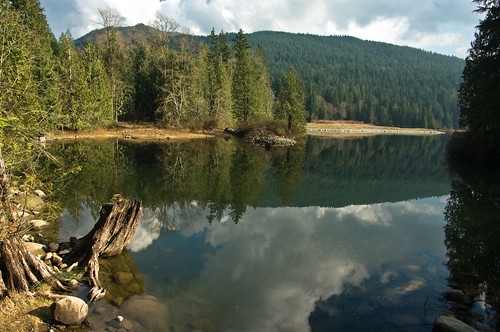
The east end of Hayward Lake, taken off the end of a walking bridge.
Posted by Alan Bailward at 8:50 PM 0 comments
Lightroom 1.4 Update Buggy
Just a word of warning, the new 1.4 update for Lightroom appears to be buggy, with the main error that I've seen is when converting to DNG under windows. The symptoms appear as an error when viewing images (converted to DNG under windows) when zoomed in and getting "an unknown error has occurred" displayed on screen.
I've seen no errors importing images as straight PEFs, though. Might be an idea to hold off on the update until either 1.4.1 or a similar fix has been issued.
Adobe has issued a statement regarding the update, via Lightroom-Blog.com.
Posted by Alan Bailward at 8:46 PM 0 comments
Friday, March 14, 2008
Lightroom Updated to Support K20D and K200D
Just a quick note to say that I just saw in the forums that Adobe Lightroom has been updated with a few tweaks, including support for the K200D and the K20D. Downloads for Windows and Macintosh. Also for the Photoshop users out there you can check out the standalone Adobe Camera Raw 4.4 download.
Wednesday, March 12, 2008
Moon Shots
It's been a while since I've taken pictures of the moon, I've had bad luck in the past with it never looking quite right or as impressive as with other people posting. Tonight's foray was a bit of an improvement, mostly due to the sun's position I think. Having only a quarter moon meant that there was more crater detail to be seen, instead of the full moons I've photographed previously where it seems flat and uninteresting, similar to using on-camera flash for portraits! (Click image for larger size)
(Click image for larger size)
This is about a 50% crop from a shot using a FA 70-200mm at 200mm, exposure is F8.0/1.0s, mounted on tripod using the 2s mirror lock-up function.
I took a few images with a 2x teleconverter I bought from a friend a while back, with very disappointing results. Not only was the moon the same size in the final images (odd when it should be the equivelant of a 600mm lens (200mm x 1.5 sensor conversion x 2 teleconverter)), but it was also blurry (though this was to be expected as you lose image quality with teleconverters).
There was also a challenge in finding the moon with it on! There was so much light fall-off with the teleconverter and the 70-200 that the relatively dim moon was impossible to find. I ended up putting the 70-200 back on without the converter, found the moon, locked down the tripod and ever so carefully took the lens off, converter back on, and lens back on.
Notes for next time:
- Ditch the teleconverter....
- Keep the ISO as low as possible (there were some reasonable shots taken at ISO 800 that seemed to have bad CA)
- Alternatively, bump up the ISO to get faster shutter speed
- Wear a jacket!
Posted by Alan Bailward at 11:12 PM 0 comments
Monday, March 10, 2008
New File Size Table Up
I've put up a new filesize table with what I hope is a bit clearer view of the image file sizes. I've updated it with a new column ("tested") which has number I've actually tested in camera. I've only done DNG/PEF and JPG 14mp **** so far, simply due to the fact I don't want to wear down my shutter shooting the 54,000+ images required to test each file format. Of course, as I'm not shooting exactly the same scene as I did last time the image file sizes are a bit different (mostly due to compression, etc) so the numbers aren't exact, and depending on what you or I shoot there will always be "wiggle room".
Hope this helps!
Posted by Alan Bailward at 10:04 PM 0 comments
Sunday, March 9, 2008
My Image Import Workflow
Currently my import workflow goes something like this:
- Put 4GB SDHC card in card reader
- Open up Pentax Photo Browser, find card in the file browser
- Select all images
- Right click and select 'Save as DNG'
- Select a save destination of a folder on my desktop called 'dng'
- Wait a while as it churns away
- When it completes, open up Adobe DNG Converter
- Select the 'dng' folder for the input
- Select another folder called 'dng-out' for the output
- Click 'convert'
- Wait some more
- Now open up Lightroom
- Select 'Import Photos from Disk'
- Browse to the 'dng-out' folder and select all
- Continue with a normal Lightroom import
This is a long and tedious process unfortunately :(
After doing all the filesize tests in the last post though, it looks like the difference of 10mb per image doesn't add up. Shooting PEF gives me 169 images on a 4GB card, shooting DNG gives me 168. What's up with that?
I think next time I go out shooting I'll do DNG and convert to the smaller Adobe DNG in the Lightroom import... eliminating everything above between "put card in reader" and "open Lightroom". I think that any differences in download speed would be negated by the fact it's one step and not 15! :)
Posted by Alan Bailward at 11:00 PM 2 comments
K20D File Sizes and Formats
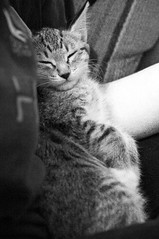
I wanted to do a bit of a comparison of the filesizes that are created by this new 14 mega pixel monster. My testing was pretty simple. Tripod setup, facing a dull and boring corner of the office, set to the first image quality setting, take a shot, next setting, etc. Then take out the card and put the filesizes into a chart that I can then share with you. There will no doubt be minor differences in filesize if other people look at this test due to the image contents, type of SD card, etc etc.
First, a bit about the different settings. The K20D has the following capture options:
- JPEG
- RAW
- RAW+
- JPEGs can be captured at 2 MP, 6 MP, 10 MP and 14 MP, and at each of those settings you can have different detail qualities, *, **, ***, and ****.
- RAW can capture in PEF (the Pentax RAW format) or DNG (the adobe designed open standard for RAW data capture. All RAW data is captured at 14 mega pixels.
- RAW+ (ie: RAW and JPEG together) can be either PEF or DNG, as well as having all the JPEG options available (2mp to 14mp and * to ****).
That's a lot of options when you put them all down in a grid!
Update: Please note that according to this thread the methodology I used (trusting the camera's image remaining calculation) is innaccurate. I'll be testing again tonight by actually taking pictures to hopefully get some "real" data.
Update #2: Updated the pure RAW DNG/PEF numbers... DNG was the same, PEF gives you almost double what it predicts. I'm not going to shoot the tens of thousands of shots to calculate out all the options, I don't want to wear down the shutter! However, I'm going to add another column with the math based on the average image size based on a 4GB card giving you 4,094,855 (approx) KB.
| Shots on 4GB Card | |||||
| Format | Size (KB) | Predicted | Calculated | Tested | |
| JPEG | |||||
| 2MP | * | 280 | 8,973 | 14,624 | |
| ** | 586 | 5,025 | 6,988 | ||
| *** | 1,029 | 3,064 | 3,979 | ||
| **** | 1,816 | 1,903 | 2,255 | ||
| 6MP | * | 673 | 3,807 | 6,084 | |
| ** | 1,478 | 2,026 | 2,771 | ||
| *** | 2,580 | 1,185 | 1,587 | ||
| **** | 4,144 | 734 | 988 | ||
| 10MP | * | 1,093 | 2,563 | 3,746 | |
| ** | 2,579 | 1,231 | 1,588 | ||
| *** | 4,947 | 701 | 828 | ||
| **** | 7,306 | 421 | 560 | ||
| 14MP | * | 3,660 | 1,697 | 1,119 | |
| ** | 5,998 | 878 | 683 | ||
| *** | 10,752 | 488 | 381 | ||
| **** | 15,811 | 283 | 259 | 347 | |
| RAW PEF | 15,811 | 169 | 259 | 251 | |
| RAW DNG | 23,605 | 170 | 173 | 170 | |
| RAW+ PEF | |||||
| 2MP | * | 16,091 | 166 | 254 | |
| ** | 16,397 | 163 | 250 | ||
| *** | 16,840 | 160 | 243 | ||
| **** | 17,627 | 155 | 232 | ||
| 6MP | * | 16,484 | 162 | 248 | |
| ** | 17,289 | 156 | 237 | ||
| *** | 18,391 | 148 | 223 | ||
| **** | 19,955 | 137 | 205 | ||
| 10MP | * | 16,904 | 158 | 242 | |
| ** | 18,390 | 148 | 223 | ||
| *** | 20,758 | 136 | 197 | ||
| **** | 23,117 | 120 | 177 | ||
| 14MP | * | 19,471 | 154 | 210 | |
| ** | 21,809 | 142 | 188 | ||
| *** | 26,563 | 125 | 154 | ||
| **** | 31,622 | 106 | 129 | ||
| RAW+ DNG | |||||
| 2MP | * | 23,885 | 165 | 171 | |
| ** | 24,191 | 163 | 169 | ||
| *** | 24,634 | 159 | 166 | ||
| **** | 25,421 | 154 | 161 | ||
| 6MP | * | 24,278 | 161 | 169 | |
| ** | 25,083 | 155 | 163 | ||
| *** | 26,185 | 147 | 156 | ||
| **** | 27,749 | 137 | 148 | ||
| 10MP | * | 24,698 | 158 | 166 | |
| ** | 26,184 | 148 | 156 | ||
| *** | 28,552 | 135 | 143 | ||
| **** | 30,911 | 120 | 132 | ||
| 14MP | * | 27,265 | 153 | 150 | |
| ** | 29,603 | 141 | 138 | ||
| *** | 34,357 | 125 | 119 | ||
| **** | 39,416 | 105 | 104 | ||
A few thoughts and notes.
First of all, as of now, the K20D PEF format is not recognized by Adobe Camera Raw, so programs like Photoshop and Lightroom are unable to open the PEF files. The DNG files can be opened of course, but at the expense of almost 10mb per image file. Also, the K20D created DNG files can be opened directly with the Adobe DNG converter, and they can be converted down to 13mb from the 23mb they come from. They are probably stored uncompressed for speed.
Also, the K20D DNG files can be converted to compressed (or at least smaller) DNG in Lightroom if you select the 'convert to DNG' option when doing an import.
New Strap - Lowe Pro Voyager
After lugging the K20D around for a bit yesterday I found that it's slightly bigger bulk, combined with the DA16-45/F4.0 lens was a bit chunky. To that end I stopped by Lens & Shutter in Abbotsford and picked up a Lowepro Voyager neck strap. I'm still not 100% convinced about it as I have yet to take it out for a test drive, but it does seem to have a fair amount of neck padding available. It has a system where you can disconnect the strap from the camera, which worries me a bit in case it somehow gets disconnected, but as I said, I'll have to see. My plan is to take some shots after work tomorrow in Vancouver, so we'll see how that goes.
Posted by Alan Bailward at 11:25 AM 0 comments
Welcome!

My name is Alan Bailward, and I'm a photographer. Well, a wannabe photographer anyway. In the early 2000s my father gave me a an old SLR of his, a Pentax P30T and a couple of lenses and I immediately went to town, carrying the thing around with me all the time and no doubt looking like a complete dork!
Time passed, and the age of the digital camera moved into it's own. I got myself a little Canon A60 point and shot, then after a while with that, and while consuming photography books and websites at a voracious rate, hit towards the upper limit I could do in terms of ISO noise and aperture restrictions. About this time (early 2004) the age of the "affordable" DSLR was coming into it's own. The original Canon Digital Rebel, the Pentax *ist-D, and the Nikon D70 were the main contenders. All were 6 megapixel, had similar features, and for all intents and purposes were equivelant.
After much deliberation and a lot of after hours consulting work, I purchased the *ist-D because it was smaller and more solid feeling than the others (to me anyway), and could use any Pentax lens, which meant that I didn't have to buy any, which meant that the cost of the body and kit lens (yea, I broke down and bought it) was the same as if I had gotten the cheaper Canon body and nice lens (which a friend of mine had).
Fast forward four years and 30,000 images later, and I decided to take the next step and purchase the Pentax K20D, and after three days with it, have no regrets!
I figured that it'd be interesting to blog some of this journey, maybe put out some hints and tips, and share what I'm up to. I have to give full kudos to The K10D Blog for inspiring me to do this, and I hope not to step on Bruce's toes in terms of content or ideas.
Really, this is just an excuse for me to completely geek out photography wise and hopfully people will find some interest in it!
Look here soon for new info!
Posted by Alan Bailward at 10:48 AM 0 comments